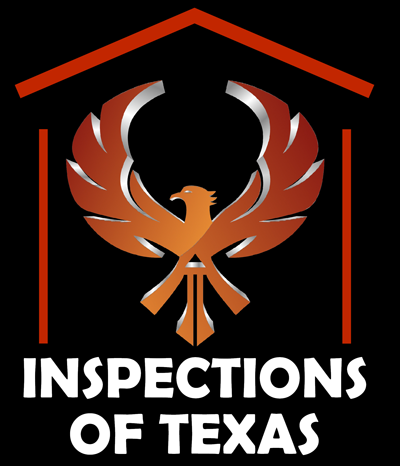Have you ever wondered what an inspector is doing or why it is taking them so long? In the “How We Inspect” series, we will answer this question. Each time, we will discuss one of the major systems of a house: Electrical, Plumbing, Structure, HVAC, and Appliances. At Inspections of Texas, we inspect over 400 items in each house. We call it our “Formula 400” relating to the Firebird in our logo. This month, we are going over the Electrical System.
Service Entrance and Panel Box
The service meter box is where the utility company’s lines stop and yours begin. This is where large cables called service conductors are attached to the house from overhead poles or underground cables. We inspect the condition of overhead lines where they are attached. We pay close attention to the distance above the roof, ground, driveway, and sidewalks for the safety of our clients. The service conductors lead into the panel box, which we inspect by removing the cover, called a deadfront. We assess the condition of the box and each of the many wires inside. Twice we have seen that the box was painted on the inside. Upon close inspection, they had painted it to hide that there had been a fire in that panel box.
We inspect the wires and branch circuit interrupters (usually breakers). We make certain the breakers required to be AFCI are protected and recommend this as an upgrade on an older home since it protects from electrical arcs. We especially check the wire size and labels. Frequently, we see a newly installed air conditioner still has the old, higher amperage breaker which could damage the HVAC system if not corrected. The HVAC unit could overheat and be ruined if it doesn’t shut off at the maximum amperage listed on its own label. We also make sure the wires are in the correct places and not overcrowded – we have seen some with three wires on the same screw. These are only a few of the many deficiencies we see in panel boxes.
Distribution
Electrical distribution starts in the panel box as the wires move the electrical current to receptacles, switches, lights, and appliances. The first thing we do inside a house is turn on all the lights, switches, and even appliances to “load” the panel box and see if any issues arise. Once, we began to smell burning plastic, so we searched and discovered that the lights just outside the door had melted! The breaker had also not tripped like it should. More commonly, lights will flicker and some switches will get hot, indicating they may have loose wires.
Next, we test all available receptacles for proper wiring and stability. We also test all the GFCI receptacles to be sure that it will cut off the electricity when tripped. Part of having everything turned on for this process also allows us to be sure that it only trips the receptacles. Often, we see it trip a light, the Range, or even the Refrigerator. You certainly wouldn’t like it if running a blender caused the circuit to trip and also turn off the refrigerator!
Detectors
Another thing that we check are Smoke Detector and Carbon Monoxide Detectors. We inspect to see if they are old or painted, since paint interferes with their ability to detect. We want to be sure that they are all in place and will reach all of the bedrooms to protect our clients as they sleep. If it looks like it might be too far, we will use a tape measure to be sure that they are close enough to be effective.
While every detail cannot go into this article, this is our basic methodology for inspecting the electrical system. We want to be sure that our clients get the best inspection possible from the service conductors down to the doorbell. Our inspectors understand how houses are built and how each of the systems interact with each other. We aren’t just working for a paycheck. We know that being detail-oriented is important for protecting the safety of our clients. We are glad to do our part to make Texas homes safe and happy.

